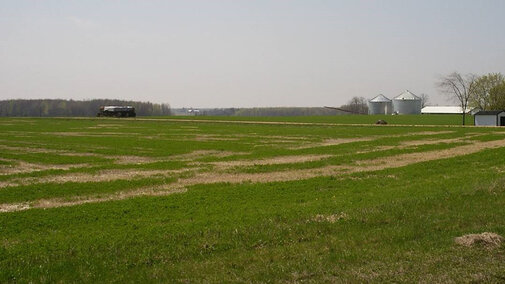Alfalfa will soon green up and start to grow in many areas — at least those plants that survived the winter.
Also see
Adding Grass to Thinning Alfalfa Offers a Win-Win for Land and Livestock
The lack of snow cover earlier this winter when we experienced sub-zero temperatures could have led to cold injury or, more likely, enabled dry winter winds to dry out and kill exposed plants, especially in areas that were dry last fall. In addition, more fields than usual were cut during alfalfa’s winterizing period last fall, increasing their risk of winter injury.
Evaluate your own stands early this spring. Older, dryland fields that have fewer than 30 new shoots per square foot coming from two or three plants may need to be planted soon to a different crop and new fields planted to alfalfa. Very productive sites, such as irrigated and sub-irrigated fields, should have at least 40 shoots per square foot from four to six plants. Anything less should be a strong candidate for rotation. Stands tend to lose about one-tenth of a ton in yield potential for every shoot below these recommended numbers.
Check for these densities in several areas of your fields when the early shoots are 4 to 6 inches tall. Since some shoots begin growing later than others, stands with enough plants but slightly low shoot density may be alright, especially if shoot height and distribution is fairly uniform. However, if plant density is low or shoot growth is not uniform, yields probably will be lowered.
Check your alfalfa stands soon after growth begins to allow time for any needed changes in your cropping plans.

